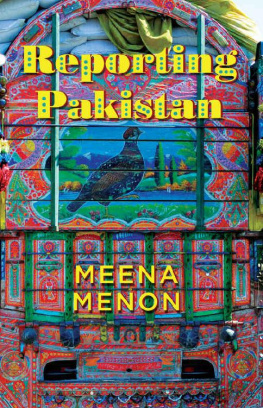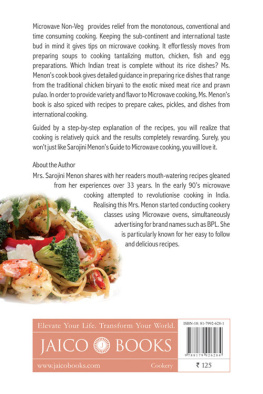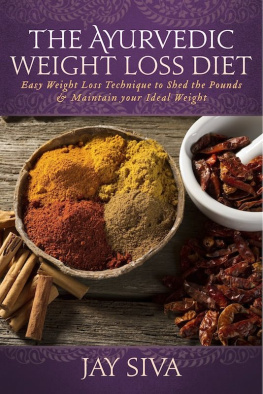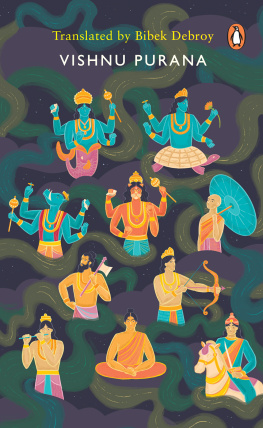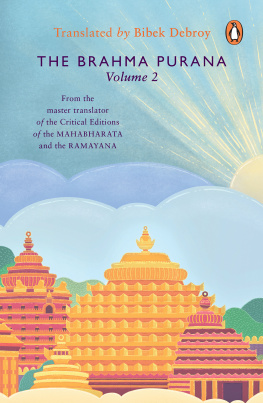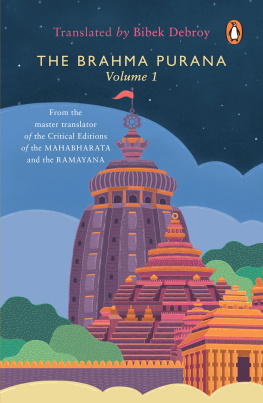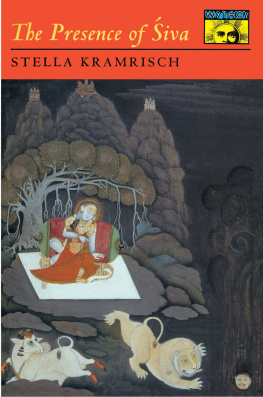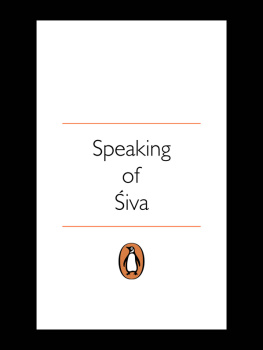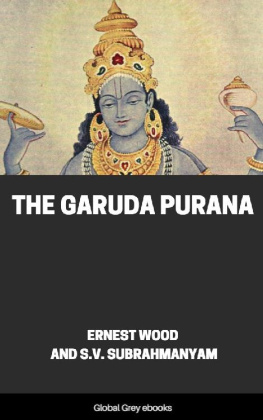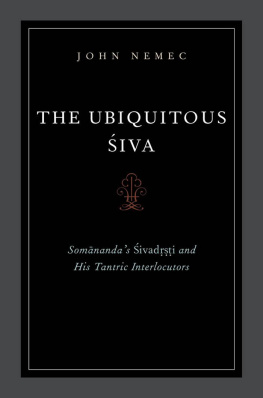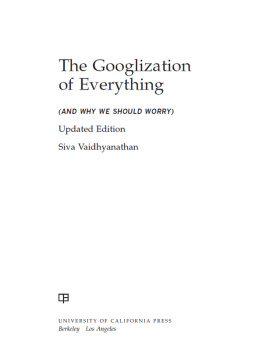SIVA PURANA
The ancient book of Siva
Ramesh Menon
C opyrightRamesh Menon 2006
Copyright this Kindle editionRamesh Menon 2012
All rights reserved
Cover painting Pradoksha Nritham by Suresh Muthukulam
Reproduced with the permission of the artist
CopyrightSuresh Muthukulam 2002
http://www.keralamurals.com/
To Sri Ramana Maharishi
Contents
Acknowledgement
A Word
Introduction
The Beginning: Rudra, Sati
Amrita
The Sarabha and the Sudarshana
Three Incarnations
Twelve Jyotirlingas
The Sarabha and the Sudarshana
Uma
Karttikeya and Ganesha
Yuddha Khanda:the cantos of war
Antah:in the end
Acknowledgement
The late Parameshwara Iyer, who translated the entire Siva Purana into English from the Sanskrit for Motilal Banarsidass, was my teacher for a time. Except for his painstaking endeavour, this book, which is based upon his scholarly translation, would have never been written.
A Word
The length and breadth of India is strewn with temples that have a startling commonality of themes. Increasingly, I do not believe the Puranas, the books that describe these themes, are merely fictions of men of old. Rather, they seem to describe a human history more primal than the one of a few thousand years to which we habitually think of ourselves as belonging. In the Puranas, we see reflections of a cosmic history, when this earth was open to the universe.
It is difficult to accept that the greatest glory of ancient India was the drainage system of Mohenjo-Daro and Harappa . We know, from modern cosmology, that the universe is much older, vaster and more complex than we imagined a hundred years ago. We know our own history is less than a speck against universal horizons of space and time. It is absurd that we pass any judgement whatever on a universe in which we are such infants: that we dare say This is so and this not in the cosmos. Surely, our human history is an infinitesimal part of the history of the universe, not vice versa; and our ignorance is far more profound than our knowledge.
The characters in the Purana are cosmic in dimension, even the lesser ones; as is the sweep of time, space and spirit we encounter here. We can easily dismiss it all as the exaggerated fantasies of nameless writers of the dim past. Or else, we begin to suspect there is more to learn here than we dreamt: that human history is fundamentally different from what we have been taught.
The beings we meet in the Puranas are godlike, grandly demonical and incomprehensible when we compare them to ourselves. They live for thousands of years, fly in sky chariots , vimanas fleet as thought , command great astras: weapons that consume whole cities in a wink.
This book is the Siva Purana condensed, rearranged and retold, I hope in more contemporary and imaginative style than is generally available in English. Much of it deals with characters and events that are incredible by our humdrum perspective. But is it possible that beginningless Siva, of the eight cosmic bodies, the fire from whose third eye ends the universe, Brahma, the four-headed Creator and four-armed Vishnu, who sleeps on an infinite sea, are not imaginary beings, but inconceivable Masters of the stars?
In the Purana, we find this description of time, which is hardly the invention of brutish man scrabbling to create the spoke and the ploughshare:
The basic unit of life is the nimesha, the instant. Fifteen nimeshas make one kastha, thirty kasthas one kaala, thirty kaalas one muhurta and thirty muhurtas one day. Thirty days is a maasa, a month, which is one day of the gods and ancestors; six maasas make an ayana, two ayanas a year. One human year is a day and a night for the celestials, uttarayana being the day and dakshinayana the night. Three hundred and sixty-five human years make a divine one.
Four are the yugas in the land of Bharata : the krita, treta, dwapara and kali. The pristine krita lasts 4,800 divine years, the less perfect treta 3,600 years, the half-corrupt dwapara 2,400 and the almost entirely evil kali 1,200.
A chaturyuga, one cycle of four ages, is 12,000 godly years long, 12,000 x 365 human years. 71 chaturyugas make a manvantara, 14 manvantaras a kalpa. A kalpa, of 1000 chaturyugas, 12 million divine years, is one day of Brahma, the Creator.
8,000 years of Brahma make one Brahma yuga; 1,000 Brahma yugas make a savana. Each Brahma lives for 3,003 savanas.
A day of Brahmas has 14 Indras, his life 54,000 Indras.
One day of Vishnu is the lifetime of Brahma.
One day of Siva is the lifetime of Vishnu
Can it be that our past was more than what we think? Was it, in its way, inconceivably superior to the present?
By the Puranic calendar, we live today at the outset of a kali yuga. Thus, Rama lived in the world more than 800,000 years ago and Krishna 5,000, at least: at two ends of the last dwapara yuga. According to the Purana, it is natural for men of the kali yuga to be puny and short-lived and for them to forget the Sanatana Dharma and the eternal Gods. For this is the very nature of the evil age. It is also the sinister Iron Age of Greek legend, when the Gods seldom visit the earth, anymore, or beget sons on the daughters of men. It is the time when our darkling planet is sealed from the rest of the universe.
However, my purpose in writing this book was not to rearrange the readers notion of history, but to present the Spirit of Siva, auspicious, complex and immortal God, as best as I can, with as much devotion as I have, from material found in the Siva Purana.
Introduction
The sacred Puranas have come down to us in the great oral tradition of the rishis, the sages of Bharatavarsha. Once, the peerless Vyasa composed them from ancient material: ancient for him . Traditionally, a Purana deals with five subjects, called panchalakshana: the primary creation of the universe; secondary creation after periodic destruction; the genesis of the Gods and rishis; great epochs of time, the kalpas, manvantaras, yugas; and the history of some royal dynasties of the earth.
More recently, after BC 4000, until AD 1000, roughly, a lot of other material has grown around the central Purana. These concern rituals for sacrifices, other customs, festivals, caste customs, specifications for temple construction, etcetera. There are 18 principal surviving Mahapuranas, great Puranas. The Siva Purana is one of these. They are collections of revelations, in the form of stories, or otherwise, usually narrated to some rishis by a Suta, who heard them from Vyasa, who heard them from Narada, Brahma or another fabulous raconteur, in time out of mind. They have come down, invariably, in Sanskrit couplets.
The Siva Purana is considerably longer than the portions of it I have included in this book. My aim was not to undertake a scholarly translation, of which there are a few, but to write as readable a version as I could, without diminishing the spirit and the scope of the original. For example, large sections of the original deal with intricate rituals and others list all of Sivas thousand names, with their meanings. I have only touched upon these, which hold little narrative appeal for the ordinary reader.
Also, the sequence of tales in the recorded Purana is often different from mine; but I have retained all the important legends of Siva. In some sections, I have taken stylistic and fictive liberties: but never changing the meaning and flavour of the original. No doubt, generations of pauranikas, in the oral tradition, did the same.
The Puranic tradition is mainly lost to those of us that do not know Sanskrit and lack the patience to plough through scholarly translations, many of which tend to dispense with the poetic magic of the originals. These luminous stories are our races very soul. The days when we would hear them at our grandmothers knees are over. We know less of them than our parents did and our children shall know even less than we do. My book seeks to restore the Siva Purana to the English-speaking Indian in some small measure and, hopefully, to preserve it for a time in our consciousness. It also seeks to introduce the non-Indian reader to another, perhaps rare, facet of our heritage. I am aware that an English rendering cannot remotely approach the Sanskrit in depth or resonance: I pray that I have not trivialised the Purana.
Next page

